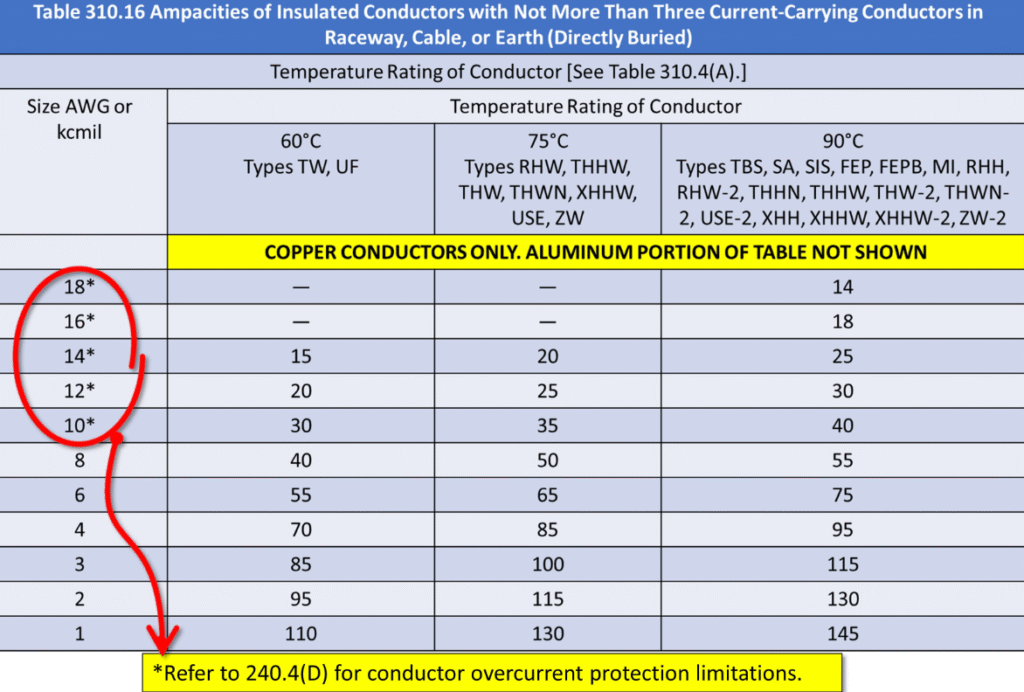
Purpose
NEC Table 310.16 provides the allowable ampacity (current-carrying capacity) of insulated conductors rated 0 – 2000 volts.
It is one of the most used tables in the NEC — helping electricians size wires safely based on insulation type, temperature rating, and installation conditions.
Understanding the Table
Ampacity depends on several factors:
- Conductor Material – Copper carries more current than aluminum for the same size.
- Insulation Temperature Rating – Common ratings:
- 60 °C (140 °F) for older cables or NM-B.
- 75 °C (167 °F) for THW, XHHW.
- 90 °C (194 °F) for THHN, THWN-2, XHHW-2.
- Ambient Temperature – Table values assume 30 °C (86 °F). Apply correction factors if ambient temperature is higher or lower.
- Number of Conductors – If more than three current-carrying conductors are in a raceway or cable, apply adjustment factors from Table 310.15(C)(1).
- Voltage Drop – Recommended to keep total voltage drop within 3 % for branch circuits or feeders.
The Asterisk “*” in Table 310.16
Some conductor sizes (18 AWG – 10 AWG) are marked with an asterisk (*).
This refers to Section 240.4(D) — the “Small Conductor Rule.”
It limits overcurrent protection, not the ampacity itself.
- 14 AWG Cu → protected by 15 A max breaker or fuse
- 12 AWG Cu → protected by 20 A
- 10 AWG Cu → protected by 30 A
So while a 10 AWG THWN copper wire is rated 35 A per Table 310.16,
the overcurrent device cannot normally exceed 30 A as per 240.4(D).
This distinction is crucial — ampacity defines what the wire can safely carry;
240.4(D) defines how it must be protected.
Example — Copper Conductors (75 °C Column)
| AWG Size | Ampacity (A) |
|---|---|
| 14 AWG | 20 A* |
| 12 AWG | 25 A* |
| 10 AWG | 35 A* |
| 8 AWG | 50 A |
| 6 AWG | 65 A |
| 4 AWG | 85 A |
| 2 AWG | 115 A |
| 1/0 AWG | 150 A |
| 2/0 AWG | 175 A |
| 3/0 AWG | 200 A |
| 4/0 AWG | 230 A |
*Overcurrent protection limits apply per 240.4(D)
⚙️ Key Takeaways
- Table 310.16 gives the base ampacity values for conductors.
- Section 240.4(D) limits breaker or fuse size for smaller conductors.
- Always apply temperature correction and conductor adjustment factors.
- Confirm equipment termination temperature rating (often 60 °C or 75 °C).
- Proper sizing ensures safety, efficiency, and code compliance.



